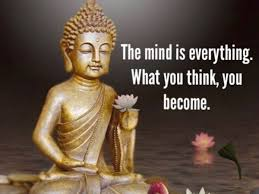Introduction
Buddha thoughts aren’t just old lessons from a distant past they are short, inward-facing ideas and practices that help us see clearly, reduce suffering, and live with more kindness. Rooted in the life and teachings of Siddhartha Gautama (the Buddha), these thoughts form a practical philosophy for everyday living: calm the mind, notice reality as it is, and act with compassion. This article explains the core ideas behind buddha thoughts, why they matter, and how you can apply them daily.
Who was the Buddha (quick context)
Siddhartha Gautama, known as the Buddha (“the awakened one”), lived around the 5th–4th century BCE in what is now Nepal/India. After years of searching and meditation, he discovered a practical path out of the cycle of suffering (dukkha). His insights were recorded and taught across generations; the heart of those teachings are what people today often refer to when they say buddha thoughts.
The essentials: What are “buddha thoughts”?
“Buddha thoughts” is a compact way to describe a cluster of core insights and practices taught by the Buddha. They include:
- Impermanence (anicca): Everything changes. Nothing stays the same.
- Suffering or dissatisfaction (dukkha): Life includes pain, loss, and unsatisfying experiences.
- Non-self (anatta): There’s no fixed, unchanging “I” at the center of experience.
- Mindfulness (sati): Clear, nonjudgmental attention to the present moment.
- Compassion and loving-kindness (metta & karuna): Caring for others as you would yourself.
- The Four Noble Truths: The diagnosis (there is suffering), cause (craving), cure (cessation), and the path (Eightfold Path).
- The Middle Way: Avoid extremes of indulgence and harsh denial; choose balanced practice.
These ideas can appear philosophical, but at their heart they are practical instructions tools for living better, not abstract theories.
The Four Noble Truths — the backbone of buddha thoughts
- There is suffering (Dukkha). Recognizing dissatisfaction, pain, and disappointment in life.
- There is a cause (Tanha/craving). Suffering is often caused by clinging and craving: wanting things to stay the way they aren’t.
- There is an end to suffering (Nirodha). It’s possible to reduce and ultimately end this pattern.
- There is a path (Magga). The Eightfold Path offers a pragmatic route to freedom.
These four points act like a simple map: see the problem, find the cause, learn that change is possible, and follow steps that transform how you relate to life.
The Eightfold Path — practical steps for daily life
The Eightfold Path groups practices into three domains: wisdom, ethical conduct, and mental training.
- Wisdom (Paññā): Right View, Right Intention
- Ethical Conduct (Sīla): Right Speech, Right Action, Right Livelihood
- Mental Training (Samādhi): Right Effort, Right Mindfulness, Right Concentration
You don’t need to master all eight at once. Even small, repeated changes speaking more honestly, paying attention to breath for a few minutes, choosing kinder actions align with buddha thoughts.
Mindfulness and meditation — the engine of transformation
Mindfulness (sati) is central to buddha thoughts. It means observing thoughts, feelings, and bodily sensations with curiosity and without grabbing onto them. Meditation trains this capacity: sitting quietly, following the breath, noticing sensations, and gently returning attention when you wander.
Practical micro-practice:
- Pause for one minute and watch your breath.
- When stress rises, name it: “tension,” “worry,” “anger.” Naming reduces reactivity.
- Do a short loving-kindness practice: silently wish someone well for two minutes.
These tiny habits accumulate. Over time they change how you respond to triggers, making choices clearer and less reactive.
Non-self and impermanence — freedom through seeing clearly
Two ideas that often surprise people are non-self (anatta) and impermanence (anicca). Non-self does not mean you don’t exist; it means the “you” you think is fixed is actually a stream of changing experiences. Impermanence reminds us that both joy and pain are temporary.
Why this matters: when you stop clinging to a fixed identity or permanent outcomes, you loosen many fears and anxieties. That doesn’t remove feeling it changes your relationship to feeling.
Ethics and compassion — buddha thoughts in relationships
Buddha thoughts always point back to how we treat others. Ethical living (sīla) is not moralizing; it’s practical: harmful actions create harm for yourself and others. The practices of metta (loving-kindness) and karuna (compassion) train the heart to wish well for others, which reduces anger and isolation.
Simple exercises:
- When someone irritates you, silently repeat: “May you be happy; may you be free from suffering.”
- Do one small act of kindness each day without expecting anything in return.
Using buddha thoughts in modern life — everyday examples
- Stress at work: Notice the tightness, take three mindful breaths, choose one calm response rather than immediate reaction.
- Grief or loss: Allow feelings to arise instead of blocking them; remind yourself of impermanence and let feelings move through you.
- Relationship conflict: Practice listening fully (Right Speech and Right Action), and respond with curiosity not accusation.
- Goal-setting: Work steadily (Right Effort) without clinging to outcomes; enjoy process over fixation on results.
Common misconceptions
- Buddha thoughts are pessimistic. No they diagnose suffering but offer a hopeful, practical path to reduce it.
- They require renouncing life. Not necessarily. The Middle Way encourages engagement with the world in balanced ways.
- You must accept everything passively. Mindfulness shows things as they are; it supports wise action, not passivity.
Short buddha thoughts you can remember
- “This too shall pass.” (Impermanence)
- “Notice, don’t react.” (Mindfulness)
- “Let kindness lead.” (Compassion)
- “Suffering arises from craving.” (Four Noble Truths)
- “Practice, not perfection.” (Right Effort)
Closing — why buddha thoughts still matter
Buddha thoughts are compact, practical, and modern-ready. They teach attention, reduce needless suffering, and invite us to act from clarity and kindness. You don’t need to become a monk to use them a few minutes of mindful breathing, a moment of honest speech, or a simple act of kindness can be your daily practice. Over time, these small choices reshape how you meet the world.









